Illustrated Review: Maple Leafs’ power play reinvigorated by shot volume, new talent

This season, the Toronto Maple Leafs' power play has been one of the biggest hits in the NHL. When it comes to deconstructing its extra-man attack lyric by lyric, one thing that's clear is Toronto likes the volume, specifically its shots, turned all the way up.
The Maple Leafs' power play has converted on 23.5 percent of its chances this season, second in the NHL, a fraction of a percentage point behind the Buffalo Sabres (23.7 percent).
And how these Leafs, young and trendy with the aesthetic of a new age pop singer, have done it, is by putting an emphasis on shot volume, taking a two-minute track and making it hectic, frantic, and hard to follow for the penalty-killing team.
Past meets present: Today's Maple Leafs bond with legends of yesteryear
Toronto is seventh in the NHL in Corsi-for per 60 minutes in 5v4 situations, per Corsica.Hockey, coming in at 95.83 shot attempts. They're one of four teams, along with the Boston Bruins, Los Angeles Kings and Anaheim Ducks, that average over 100 shot-attempts per hour of five-on-four time over the past two seasons.
This year, the Leafs' attempts on the power play haven't been as tuned up as on their debut album last season—a shade under 96 per 60 minutes this season compared to over 103 per 60 in 2015-16.
The units' effectiveness has increased dramatically though, having risen from 15.4 percent, second-to-last in the NHL a season ago, to a polar opposite second this year.
And that has gone a long way in helping remix the Leafs from a lottery-bound franchise to one pushing to end a three-year playoff drought. Toronto's scoring rate on the power play has improved from 4.88 goals per 60 minutes—fourth worst in the NHL—to 7.09, which is third-best.
A lot of this, and justifiably so, will be attributed to a talent influx. P.A. Parenteau led all Leafs in power-play time a season ago, followed by Nazem Kadri, Peter Holland, Tyler Bozak, Leo Komarov, and Brad Boyes.
This season, Parenteau and Boyes aren’t on the roster, Bozak and Kadri rank fourth and fifth respectively in 5v4 time, and Auston Matthews (rookie), James van Riemsdyk (sixth in 15-16 in PP time-on-ice), and William Nylander (10th in 15-16 in PP time-on-ice in an abridged season) occupy the top three spots.
And the influx of talent has led to an influx of scoring chances: Toronto has produced 28.34 per 60 minutes of 5-on-4 time, tops in the NHL. That's a familiar tune for the Maple Leafs though, who also led the NHL in that category last year, actually with a better mark of 28.73.
Illustrated Review: The NHL's most effective slap shot belongs to Artemi Panarin
Again, this is a nod to the kind of talent increase Toronto's roster and transitively its power play has inherited. Its 5v4 shooting percentage last season was 10.19, third-worst in the NHL, and it's up to 13.70 this year, which ranks it eighth.
A Good Bumper
When things are going well, the penalty killing team moves in a box, keeping the puck to the outside. But through cycling the puck, changing angles, and passing and spacing, a penalty's kill cadence can be thrown off.
A bumper specifically can do that job. By putting a player directly inside that penalty killing shape, the geometry of the penalty kill can be completely blown up. A quick pass to the bumper can either freeze or cause the penalty killing team to stretch out of position, like on this goal.
The Leafs do a good job of alleviating high pressure at the point. Jake Gardiner is calm with Tampa Bay forward Jonathan Drouin pressing and gets the puck to Matthews.
From there, Matthews goes to work, taking the space he has along the wall. Nylander, in the high slot, will slip to the far side and in position. Kadri is already in the middle of the action, parked in the bumper spot.
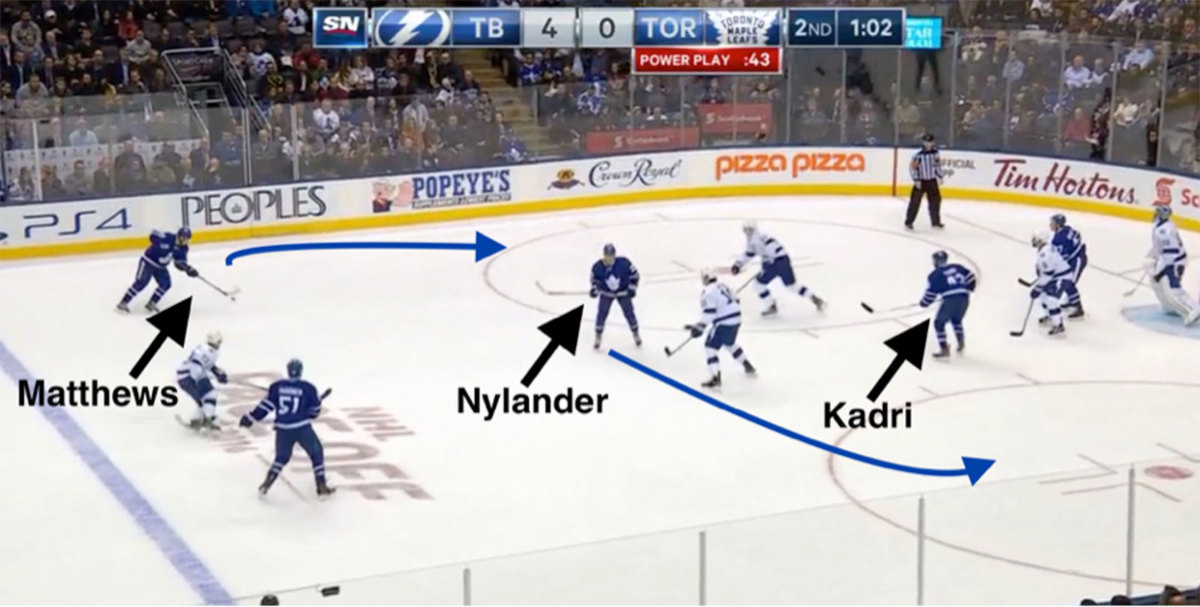
The Lightning are still in decent shape. Their penalty kill box is intact, possession is on the outside, and there's no imminent threat.
Matthews initiates the sequence, threading a pass through an almost non-existent lane to Kadri, and the fuse to the dynamite has officially been lit. Nylander, out of the frame, is on the weak side.
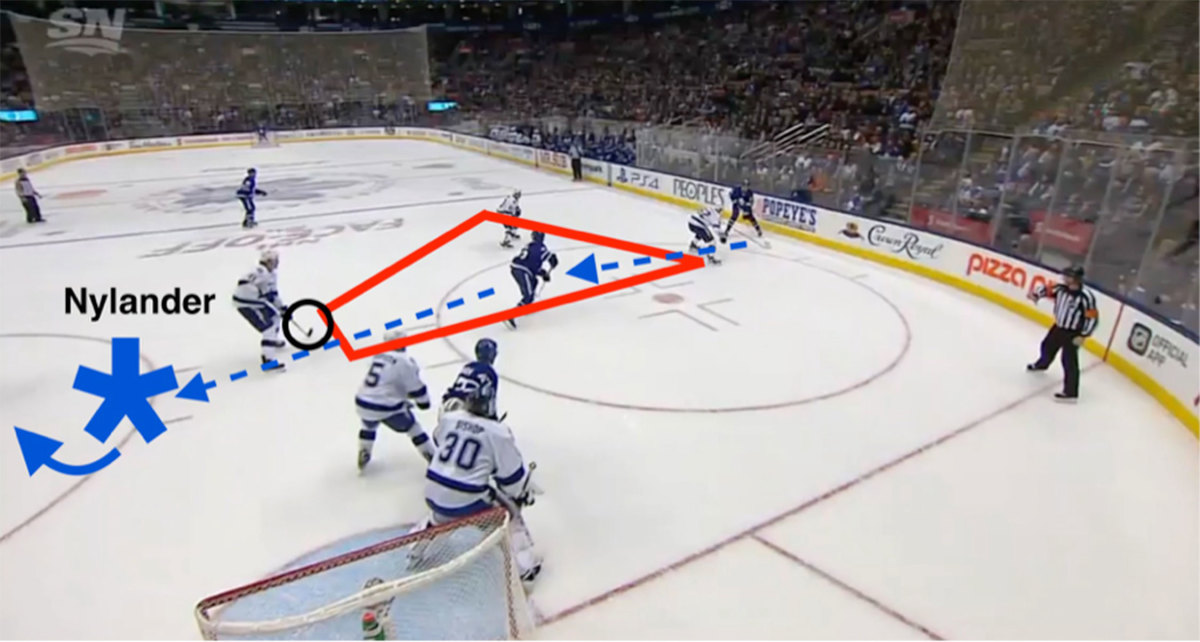
When Kadri pivots in the slot, he has Nylander wide open across the zone, and a quick pass gives the rookie forward a very clear shot on an open half of the goal.
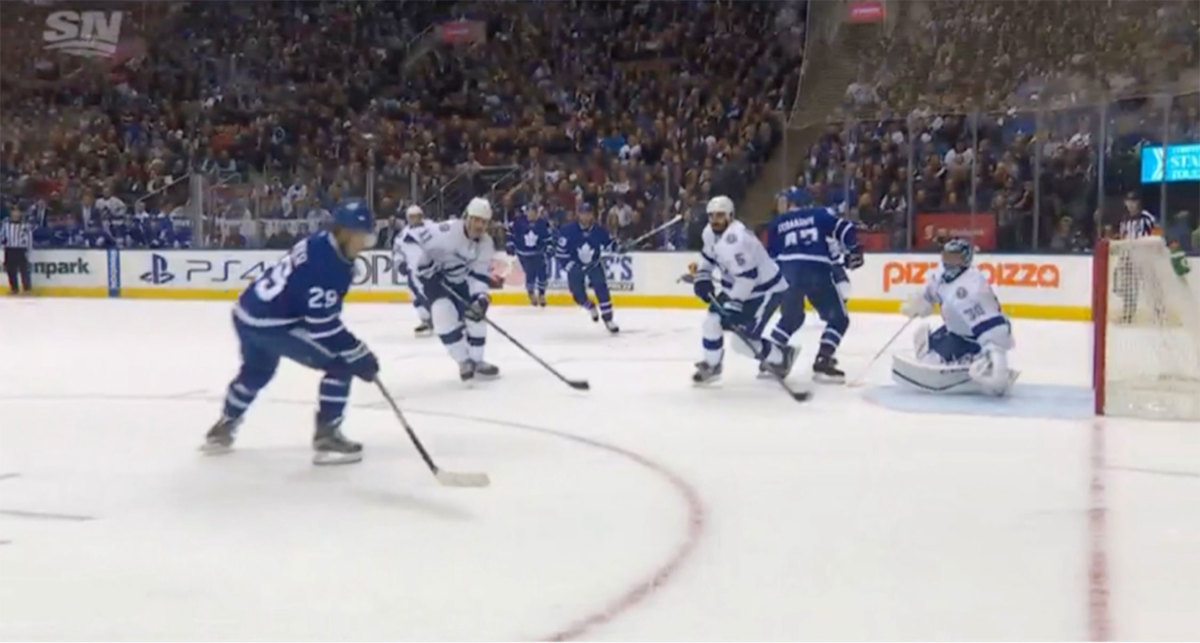
When Matthews is able to use Kadri and the bumper pass, both penalty killers on the strong side immediately collapse toward the puck carrier, while on the weak side, Boyle is frozen with his stick outside of the passing lane.
Bursting At the Seam
There's perhaps no tougher shot for a goaltender to stop than one that directly follows a cross-ice pass. It forces a goalie to push post-to-post, while simultaneously not knowing where the puck is going. Though the idea is to cover the far side of the net, that doesn't preclude a shooter from going back where the goalie just came from.
Illustrated Review: Searching for a link between face-off wins and longterm success
On this play, the creativity of Nylander frees up a seam by holding onto the puck for an extended period.
Nylander completely catalyzes this sequence, beginning with the zone entry. Winnipeg is very horizontal and standing up at the blue line, and Nylander identifies a small pocket he can curl into.
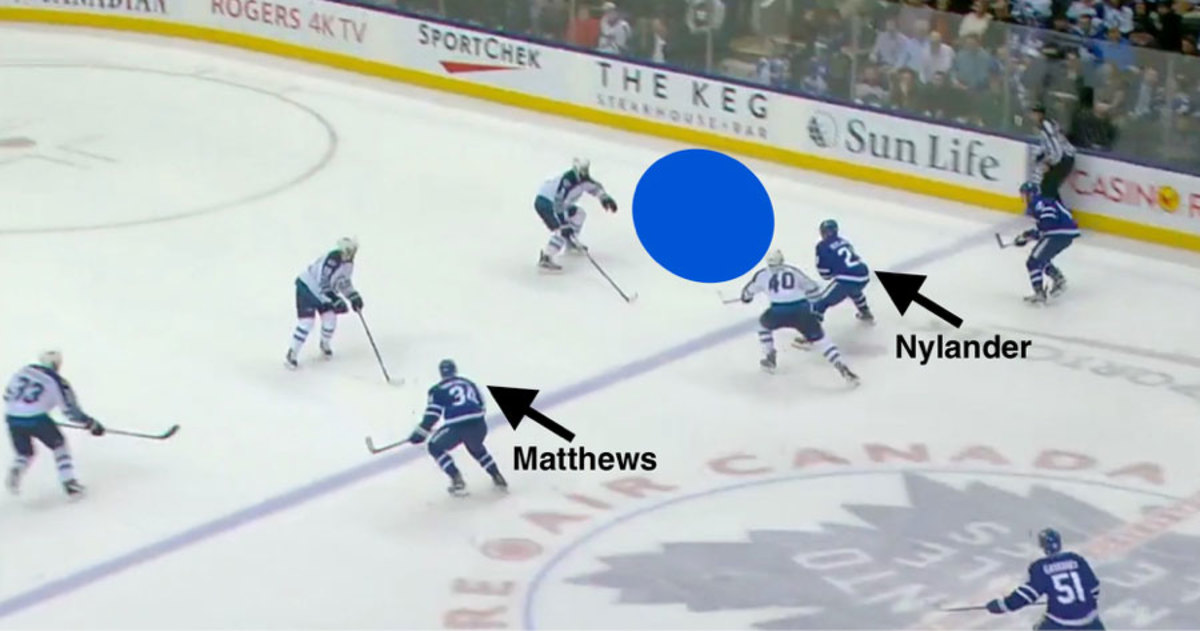
Now having gained the zone, Nylander begins to freelance. He circles near the blue line, and uses Gardiner as a decoy before making his way toward the goal. Jets defenseman Mark Stuart identifies Winnipeg has adequate coverage, and can slide toward the crease to pick up a Leaf. Forward Joel Armia, checking Nylander, has his stick in a position to prevent the puck from getting to Gardiner, and Nylander takes the space given to him.
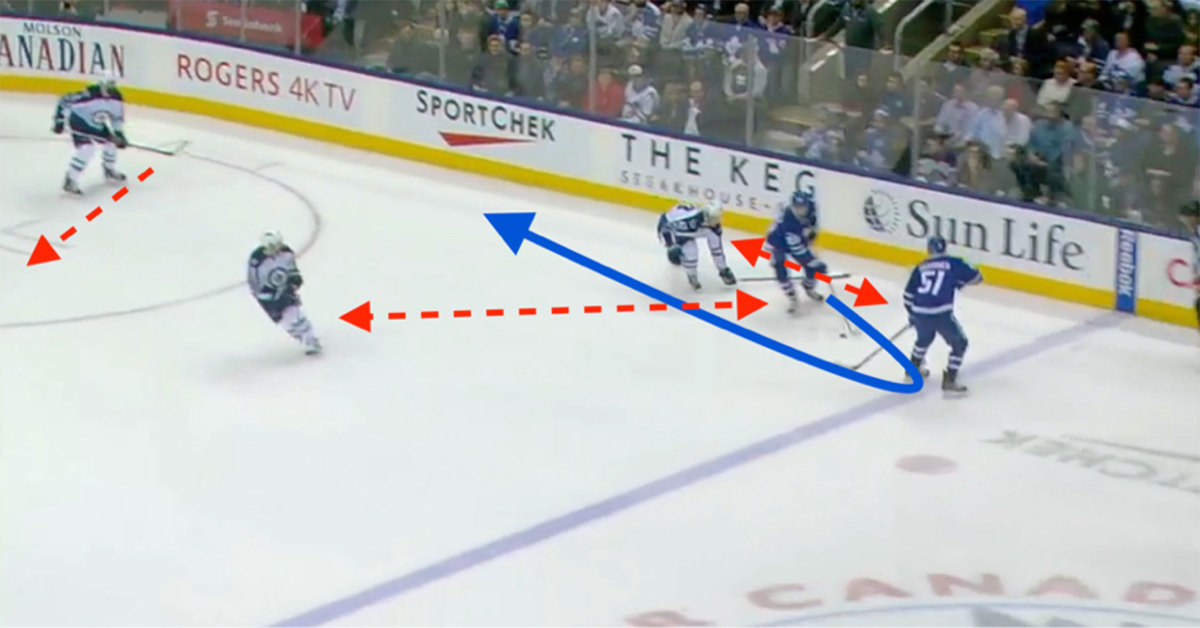
Nylander makes his way toward the goal line, and Dustin Byfuglien is responsible for covering the weak side. Nylander is patient, and continues down toward the goal line, changing the angle, and also waiting for Byfuglien to rotate toward Matthews, leaving Komarov alone. Matthews' position is key here: If he's not in the slot, Byfuglien will stay near the crease and protect against Nylander going below the goal line and around the net.
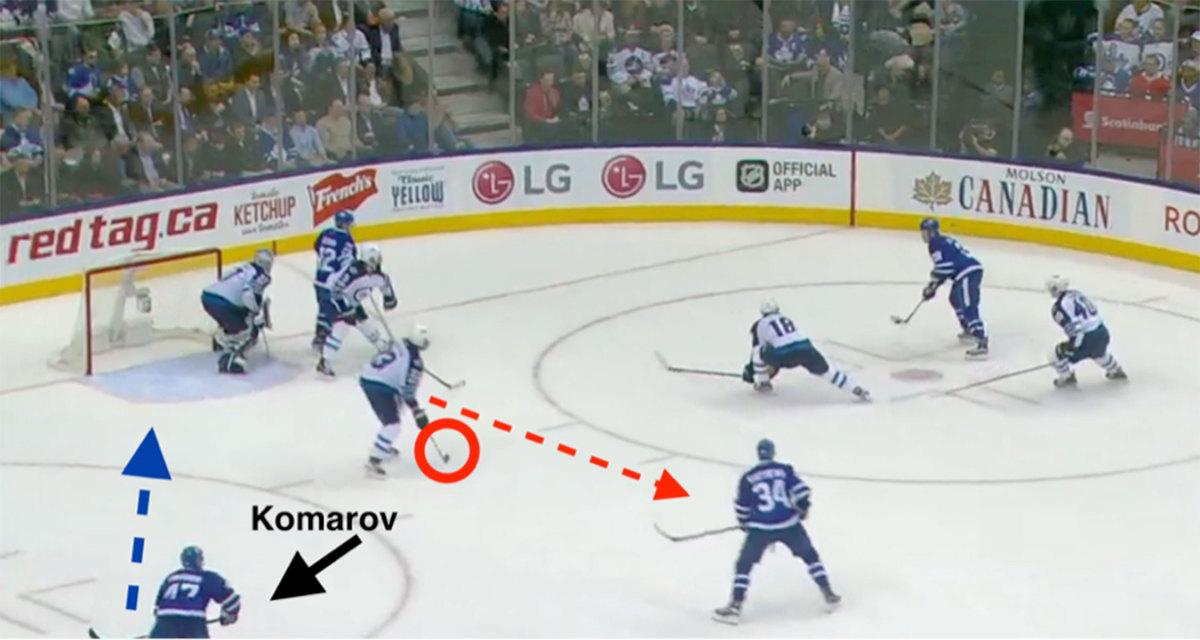
While Nylander is initiating the action, he also is incredibly patient on the puck, stick handling drawing players out of position. Puck carriers can be a magnet for the defending team, and the longer the magnet has the puck, the more players in the odd color jersey will be drawn toward him.
More Talent
Regardless of the tactical changes or improvements Toronto has made, the Maple Leafs' talent is buoying its newfound success. Power plays afford the offensive team opportunities to shoot, and skilled players can make good on said moments.
Nylander is a very effective on the power play; he ranks fifth in the NHL on the power-play in points per 60 minutes (7.45) according to Stats.HockeyAnalysis.com, which is the highest among any Leaf.
This sequence begins with Nylander facilitating a controlled zone entry, carrying the puck to the blue line before finding a relief valve along the wall.
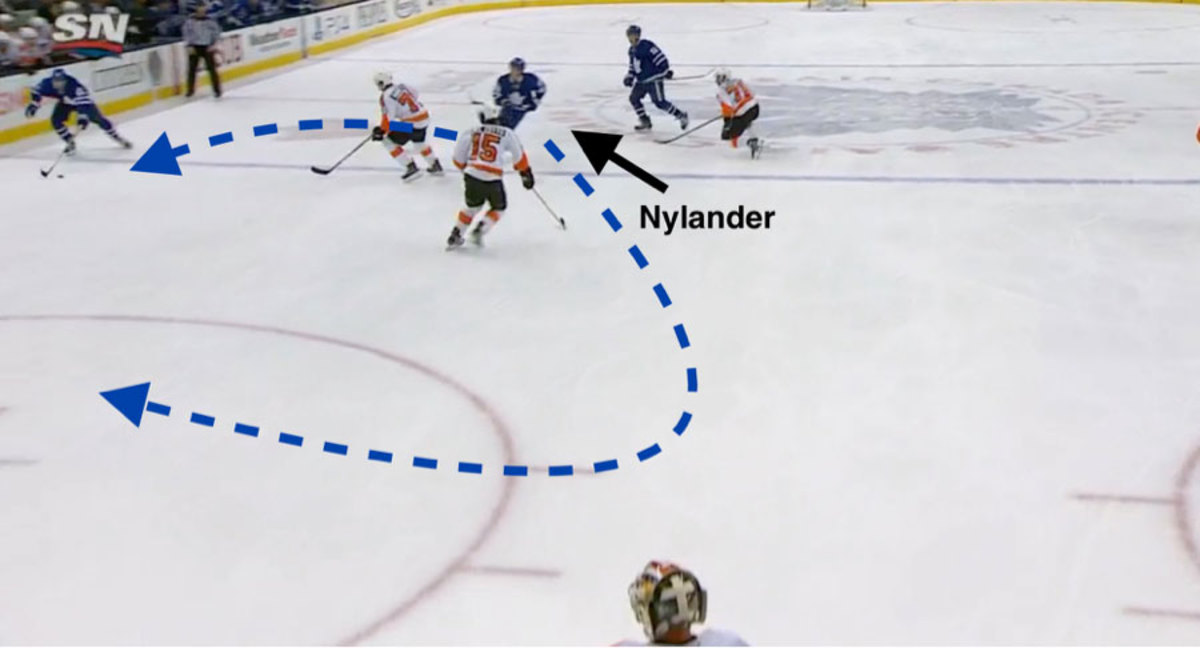
Nylander makes his way through the zone and sits down along the wall. With the Leafs in possession along the blue line, he shows for the puck and gives his teammate an easy target.
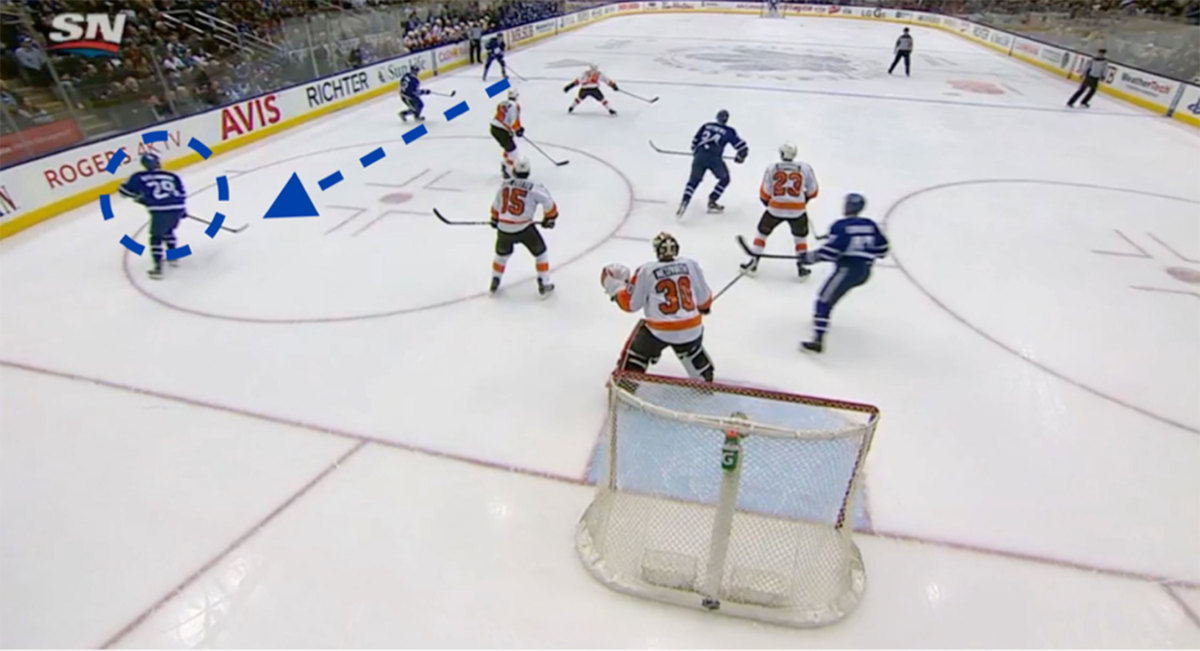
After Nylander takes the pass, he curls toward the goal with his head up. He's nearly 40 feet away from the goal, from an off angle, but sees an opening. Goaltender Michal Neuvirth has left a gap bigger than the size of a puck in the top corner on the near side. And Nylander does the rest.
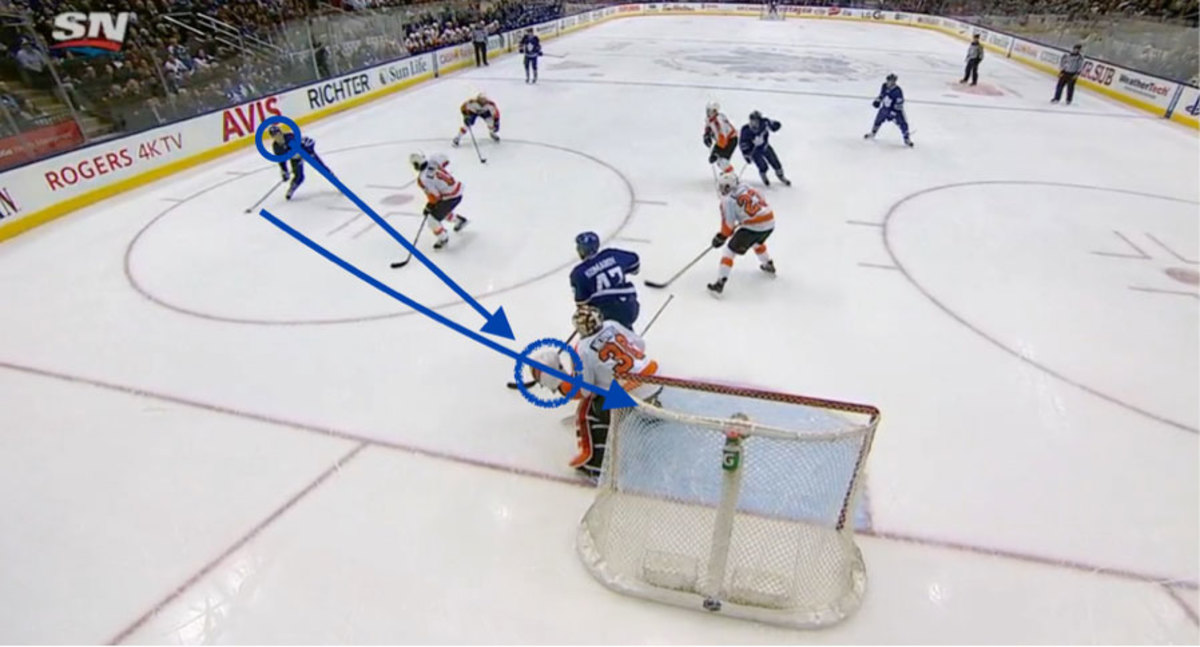
Through structure and strategy, Toronto is putting itself in position to consistently take advantage of its power play opportunities. Now with plenty of skill to trot out on these man-advantages, the Maple Leafs' power play is a major component to its offense.
